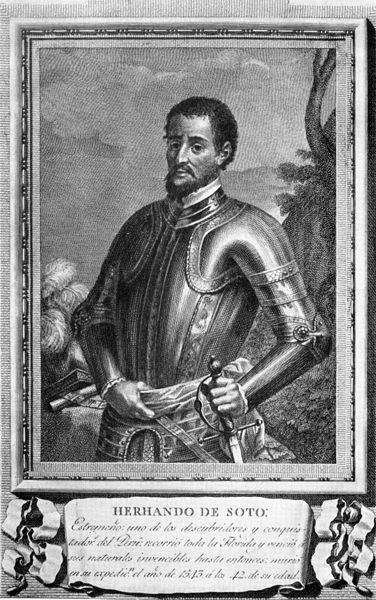Fragments of what could be 16th century giant cross found in Arkansas
A fragment of wood from what could be a 16th century cross was found this week in Arkansas.

The remains of the wood, measuring 12 inches in length with a diamter of 18 inches, was unearthed Tuesday by the Arkansas Archeological Survey at the Parkin Archaeological State Park in northeastern Arkansas. The charred piece is believed to have been part of the cross that Hernando de Soto, a Spanish conquistador, had had erected in 1541. The excavation site is presumed to be where a Native American village called Casqui used to be.
"This is a very exciting development," said Dr. Jeffrey Mitchem, the Parkin site archaeologist for the Arkansas Archeological Survey, as quoted by The Archeological Conservancy. "The combination of the wooden post segment and the undisturbed large post hole both point to a strong presumption that this is de Soto's cross from 1541. Hopefully the dating studies, especially the tree rings, will confirm it."
In 1539, De Soto -- with his ships, horses, and more than 600 men including around 12 Dominican priests -- landed in modern-day Florida. They moved inland in search of gold and other treasures, and about two years later, after their crossing of the Mississippi River, they arrived in today's Arkansas and came upon the village of Casqui. There was an extended drought in the area and the natives asked the European gods for help; so a huge cross built from the "tallest, straightest tree" -- which reportedly took a hundred men to raise -- was erected on the largest mound in the village.
In the '60s, archeologists from the University of Arkansas have discovered in the mound what looked like the top of a large wooden post. After taking samples, they covered it with plastic and refilled the hole, which was earlier dug by looters. In 1992, these samples were found by Mitchem and were carbon dated to between AD 1515 and 1663. While digs were conducted in other areas, it was only in 2015, when they received funds from the Elfrieda Frank Foundation to search for the cross, that they looked for Soto's cross in earnest.
On Monday, Mitchem and his team of archeologists used modern survey equipment to look for the spot that the '60s team found, and they began excavating on Tuesday. With further digging after the burnt piece was removed, they discovered a large pit that looks to be like where a large post was standing. Rotted wood was also found on the sides of hole. With this, Mitchem surmises that the base of the post or cross decayed over time while the discovered piece was preserved because it had been burnt. Some broken pieces of Indian pottery were also found.
Ten samples will be carbon dated, and the piece of charred wood will be taken to David Stehle, a cypress tree ring expert at the University of Arkansas, to attempt to date the artifact via the growth rings.





